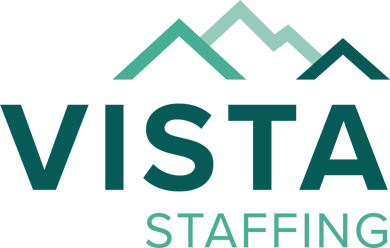Back to The Workforce Optimization Blog
Breaking Down the Barriers to Health Equality

Healthcare providers have a tremendous capacity to help heal people within their community. The issue is that often, not everyone within that community has an equal opportunity to receive the highest quality care based on circumstances often outside their control. A systemic attempt to correct these imbalances is known as striving for health equity.
The issues contributing to a lack of health equity across the social spectrum are often complex and intertwined with each other. Many of them extend well beyond healthcare and are deep-seated within our society. Holistically fixing them will take a communal effort at multiple societal touchpoints. But what measures can those in the medical profession take to help more people receive better care?
Breaking down the barriers to health equity is hardly a new or unique issue, but it is certainly one always worth addressing. Here are some solutions those within the medical profession can implement to help address these longstanding and troubling challenges to make healthcare more equitable for all.
Identifying the barriers to health equity
To go about fixing these problems, one must first identify and understand them. So what are some barriers to health equity? Just a few include:
Socioeconomic factors such as lack of adequate employment
Housing Issues
Lack of transportation
Racial discrimination
Lack of access to nutritious food
Healthcare organizations must identify these disparities within their communities. That means taking a cross-sector approach to looking at their towns or cities. Is there readily available public transportation, and how can the hospital provide services to help address that? What is the housing situation like, particularly among people with lower incomes? What are common health issues within the community, what are their causes, and what demographics are represented among the afflicted?
Community outreach
To combat health inequity, hospitals and healthcare systems must make a proactive, concerted effort to engage their communities. Community outreach — going directly to the source of the disparity — is the only way to address these unjust and unequal patient outcomes.
In North Carolina, the CDC-funded Cherokee Choices program addressed the biological and environmental reasons that Cherokee people were developing diabetes. After the program was set into action, 96% of participants reported they knew how to make better health-conscious choices.
Tuba City is a town that is located on sovereign Native American land. As part of the Tuba City Outreach Initiative, VISTA works with the Navajo Nation to address health inequity within the community. In 2020 alone, VISTA presented, credentialed, and scheduled over 40 physicians and advanced practitioners at 21 Indian Health Service hospitals in eight states. These facilities specialize in emergency medicine, urgent care, family medicine, hospital medicine, OB-GYN, pediatrics, general and orthopedic surgery, and psychiatry and advanced practice.
VISTA has scheduled 10,125 assessment reference dates to help break down inequity for people in Tuba City. This equates to 81,000 clinical hours in service of around 200,000 Native Americans and their families.
For better health equity, healthcare facilities need to actively engage their communities rather than sit back and wait for people to come to them.
Implement telehealth
Another way to level the playing field? Telehealth. Giving those in distanced communities the ability to receive remote medical care, advice, and assistance is a game-changer. Its effect is simple: as technology develops, it gives more people access to care they wouldn’t have had the ability to obtain otherwise. One example of this is during the response to the ongoing COVID-19 pandemic. The CDC reported it saw telehealth appointments skyrocket in the face of local shutdowns. When it comes to reaching patients at disparate locations, particularly rural ones, telehealth can help physicians provide care to more people, period.
Leverage workforce optimization tools
Another way to address health equity is through workforce optimization within the healthcare sector. Workforce optimization is the practice of getting the most out of a hospital’s staff. That means monitoring and managing the budget and analyzing each department of a hospital to assess staffing needs. It also means recruiting the right full-time staff and supplementing them with part-time specialists when necessary.
When hospitals leverage workforce optimization, they can provide a higher level of care across the board through contingency staffing. It leaves their physicians feeling less burnt out, their resources more well-spent, and more patients helped. Workforce optimization helps hospitals safeguard against potential workforce shortages that can lead to patients receiving low-quality care or, in some cases, not receiving care at all.
Physician staffing solutions
When it comes to healthcare staff, diversity plays a vital role in health equity. It ensures a multitude of perspectives and experiences are represented among the hospital and staff — many times representing perspectives and experiences shared by the facility’s patients. Using contingency staffing can help address a lack of diversity. Contingency staffing is when hospitals implement support staff during times when increased assistance is needed.
So how does having a diverse staff help address inequity? Studies have shown that not only are racial and ethnic minorities more likely to choose physicians of their background; they’re also more satisfied with the care they receive from those practitioners. One National Institutes of Health study found that increased hospital diversity can lead to:
More trust from patients
Improved access for patients
Addressing concerns among patients regarding the demand for healthcare services
A well-staffed facility with a diverse set of capable physicians can be a valuable asset in the fight to make a hospital more equitable for all.
Why the fight for health equity is one worth fighting
While it may seem like an uphill battle, fighting for health equity helps provide better patient outcomes for more patients. It also enables more people to receive a higher quality of care. All hospitals can look to address these disparities immediately by:
Understanding the barriers to health equity
Reaching out to their communities
Using telehealth to reach more disadvantaged patients
Optimizing their workforce
Pushing for more diversity and inclusion within their staff
These are worthy goals, but they aren’t easy to achieve. That’s why your facility should look to partner with an organization that can give you the tools you need to strive for health equity. VISTA has experience supporting these types of efforts. For more on how VISTA can be your partner in achieving more equitable outcomes for more of your patients, contact us today.



